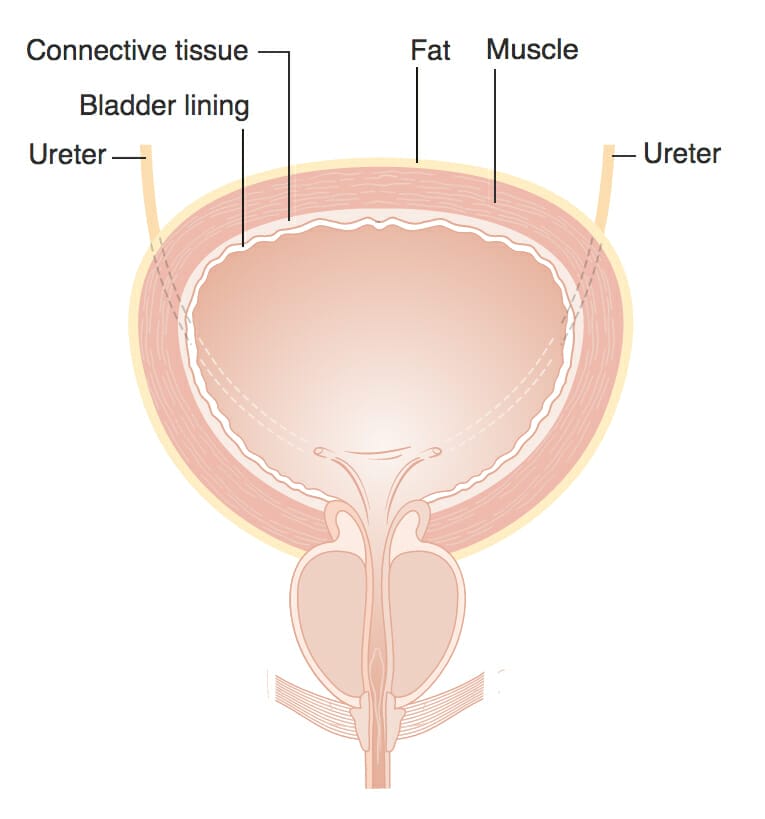The bladder is a hollow muscular organ that stores urine produced by the kidneys prior to expelling it through the urethra (urination). There are a number of conditions that can affect the bladder.
What is a urinary tract infection?
Cystitis refers to infection/inflammation of the bladder while pyelonephritis refers to infection/inflammation of the kidney.
Upper and lower urinary tract infections
Urinary tract infections can be defined by which parts of the urinary tract are affected. The urinary tract is considered in two sections; the upper urinary tract (kidney and ureters) and the lower urinary tract (bladder and urethra). The treatment and investigation differ depending on which part is affected.
What are the symptoms?
- Frequency. You may pass urine more than usual. This can be particularly annoying at night resulting in poor sleep.
- Urgency. You may need to rush to the toilet and sometimes leakage can occur if you don’t get there in time.
- Dysuria. Pain or burning on passing urine
- Discoloured urine. Cloudy or blood stained. Blood in the urine should always be reported to your doctor.
- General symptoms. Malaise, nausea, vomiting, fever.
- Back or loin pain. Sometimes present with an upper urinary tract infection.
Urinary tract infections in women versus men
Urinary tract infections are considered differently in women and in men.
Women have a shorter urethra (the tube that empties the bladder) than men, leaving women more susceptible to infections. Urine infections in men are less common and hence there is a lower threshold for investigating an underlying cause. Men also require a longer course of treatment.
Preventative measures
The following are suggested to reduce the chance of urine infections:
- Empty your bladder fully and when necessary (avoid delaying it).
- Keep well hydrated.
- Avoid perfumed products for washing with.
- Empty your bladder immediately after sexual intercourse.
- Wipe from front to back.
Potential investigations:
- Urine dipstick/MSU. To assess for the presence of infection.
- Cystoscopy. Camera test of the waterpipe and bladder.
- Ultrasound. To assess the kidneys and bladder emptying.
Recurrent urinary tract infections
Some people experience recurrent urine infections (3 or more infections in a year). Investigations may be considered to look for a possible underlying cause (see above). Strategies to reduce the recurrence include:
- Cranberry juice/tablets. Scientifically proven to reduce recurrent infections.
- Prophylactic antibiotics. Antibiotics taken regularly to prevent infection occurring.
- Patient initiated antibiotics. A supply of antibiotics at home to treat an episode of infection when it occurs.
- Post-coital prophylaxis. A supply of antibiotics to take after sexual intercourse if this is the cause of the recurrent infection.
- Topical oestrogen replacement. Of particular benefit in post-menopausal women.
- Intravesical iAluRil. This is a substance introduced into the bladder via a catheter. It helps to replenish the protective lining of the bladder, thus reducing the risk of infections.




